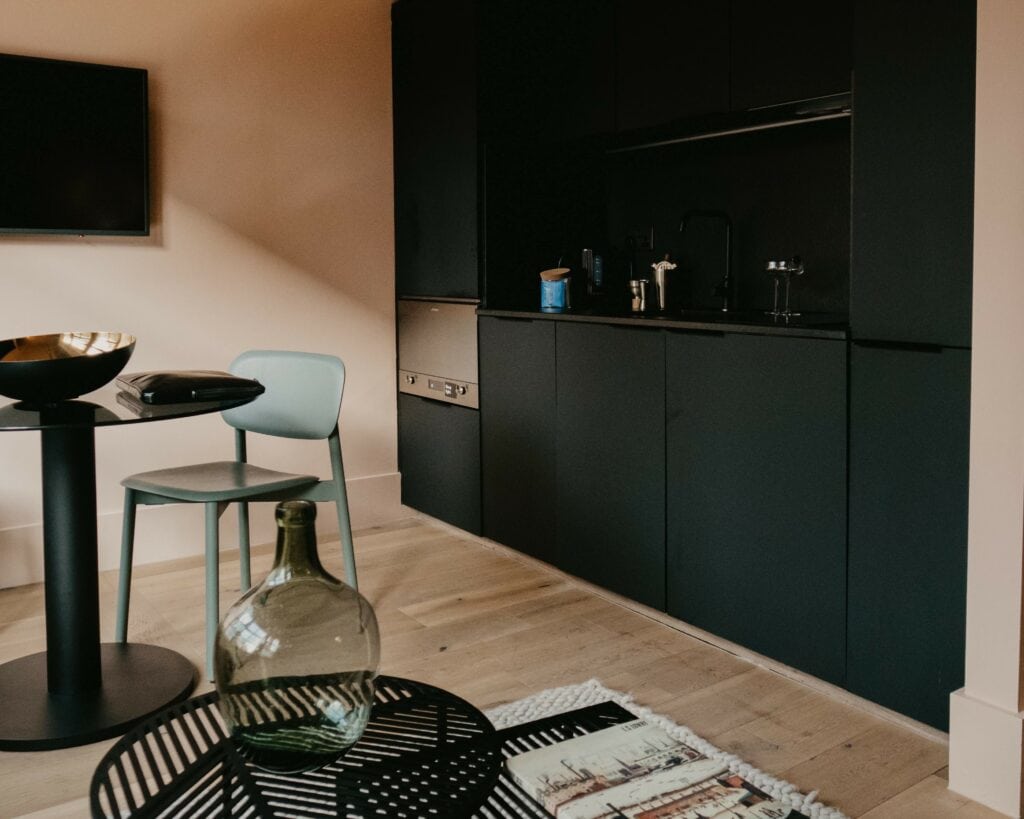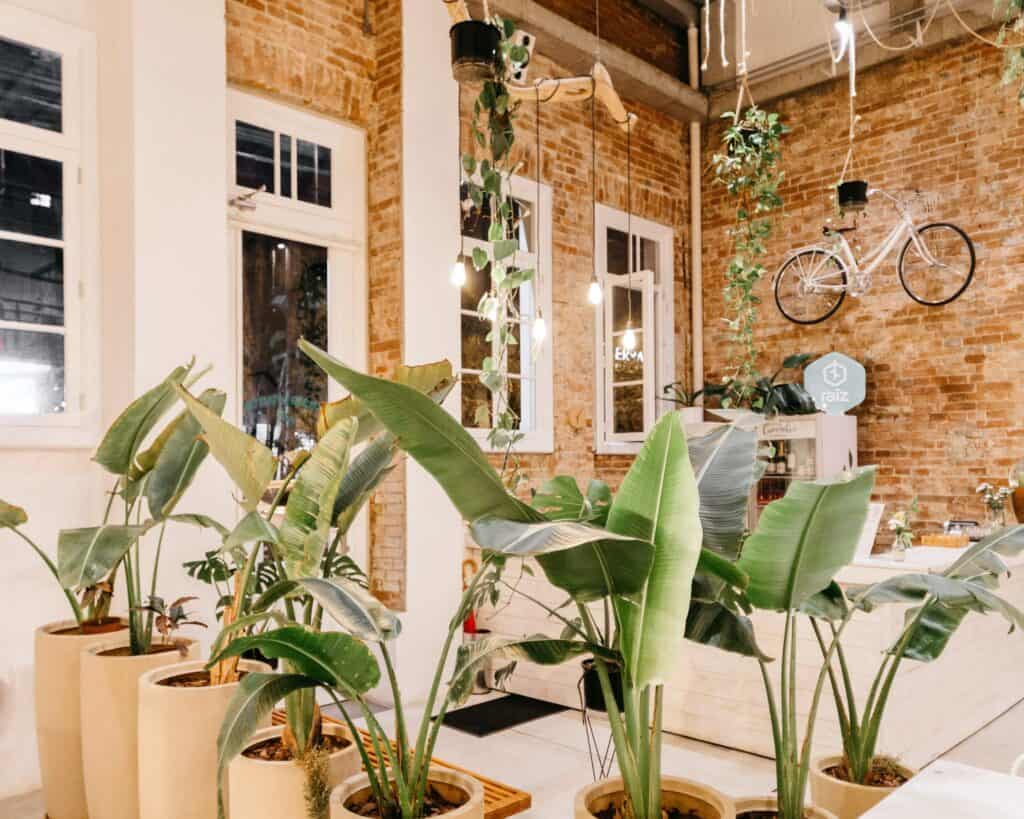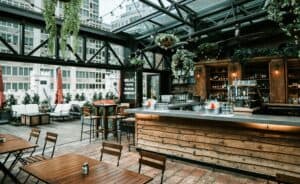We’re at a critical point in our history where active decisions concerning how we treat the environment is crucial for the future generations. Most current human activity is causing insane amounts of greenhouse gases to be released into the Earth’s atmosphere, especially as humans use more and more energy with little compensation. We are outputting more than we are absorbing, and society needs to transform to be able to create a balance between ecological mindfulness and human living.
Out of all societal sectors, residential buildings are at the intersection of environmental responsibility because they combine the sectors of electricity, land use, and industry. Fortunately, coliving operators wouldn’t be effective representatives of the coliving industry without a well-rounded awareness of their environmental impact.
In this blog, we explore the importance of sustainability in housing, and how coliving manifests sustainable practices in response to the world’s most pressing environmental issues.

What is Sustainability?
Sustainability is a common buzzword grown in increasing importance alongside growing fears of global warming. However, it must be clarified that when we talk about sustainability, environmental sustainability is often discussed in tandem with economic development or social sustainability to create this “tribrid” focus.
Because sustainability essentially means durable, assigning housing as sustainable is about making housing and accommodations that can physically last through the materials used in construction and design, and making housing that sustains financial and social practices through shared resources that reduce the overall environmental footprint and increase economic sustainability. By making things last, overconsumption and thus, unnecessary waste production also decreases.
Traditional Shared Housing
Compared to coliving spaces, shared housing tends to be offered by a landlord that may not prioritise sustainability in their properties. Their main focus is allowing cohabitants to split their living costs without necessarily inspiring residents into making greener lifestyle choices.
The rented properties may not use electronics with greener energy labels, or be constructed with the use of natural resources. Some apartments even require you to pay extra to rent the apartment’s supplementing parking spot or garage, indirectly encouraging the use of cars. Furthermore, shared housing is not guaranteed to be located in areas easily accessible by public transport.
Coliving spaces, on the other hand, considers ecological mindfulness well before the first idea of a building comes up. Coliving operators consider central locations for accessibility, ensure their accommodations contain a well-balanced amount of greenery and with homes constructed from sustainable and more environmentally-friendly materials. They promote greener transportation choices and invest in electronics that are energy-saving.

Sustainable Development
Coliving being a form of communal living means its properties contribute to increased housing density, meaning less land area is taken up which would have been done for individual households. This allows coliving residents to accumulate a smaller carbon footprint than single apartment-residents and promotes efficient land and energy use for housing in general. This also means that coliving spaces are particularly suitable for big cities where populations and energy consumption is high and land opportunities for housing are minimal.
Coliving also allows residents to gain transparent insight into their utility costs, allowing them to stay vigilant on their energy usage and to eventually develop a stronger conscious for sustainable practices! And if we’re honest, in this economy, you would much rather have energy bills that don’t make your bank account cry.
Shared Assets Reduces Overconsumption
Coliving makes it easy for young people to adopt a sustainable lifestyle because of affordable housing. Thanks to a fixed rental cost that includes all necessary amenities, tenants don’t need to negotiate with roommates and housemates about how to split the bills. In addition to this, coliving’s built in community makes it easier than ever to live more sustainably – for example, through carpooling or food sharing – that reduces overall waste.
In addition, if, by chance, one resident is moving out but has some leftover products, food, or home accessories that cannot be taken with them, the staying tenants can take it over to prevent it from being thrown out. By learning to live with others, residents can learn to manage their resource usage that allows others to use them as well. We love going back to the core foundations of: reduce, reuse, recycle!
Furthermore, According to Vivarium Coliving, a local Spanish coliving concept, sustainable communities are defined as “groups that promote sustainability as a way of life, contributing with direct practices and promoting the movement with education.” In this definition, coliving emphasises these communities with accommodation that promotes slow travelling which is more sustainable and environmentally friendly than jetsetters hopping from one flight to another.

Businesses Focused on their Environmental Impacts
Ever heard or saw the acronym “ESG” when visiting a company’s website? This stands for “Environmental, Social, and Governance” and it’s a framework that ensures companies are not neglecting their ethical duties concerning climate change, society, and the laws of local governments. When it comes to sustainability, this can be done by measuring the company’s impact through company reports like Ecosia’s monthly financial reports or by partnering with ethical suppliers and partners. It’s crucial for organisations to abide by an ESG as it ensures they are taking active measures toward their corporate responsibility which appeals to investors and their target consumer.
The Citylifer’s ESG takes environmental sustainability very seriously in the type of construction materials it uses to becoming a greener space that promotes a greener lifestyle for its members. For example, being a Dutch-based operator means that bikes are an essential mode of transportation. The Citylifer buildings are designed with bountiful bike storage in mind and connecting members to local bike subscriptions and bike-sharing options. We also aim to include gyms in most of our buildings to encourage exercise and healthy eating.
In addition, we don’t intend to build new buildings from scratch but rather recycle old office buildings and adapt our design to what already exists. Curious to know more about our sustainable design? You can find out more in our latest press release.
Eco-conscious Supply Chain
In coliving, everything from design materials to energy efficiency is considered in the operator’s sustainable development. For example, at The Citylifer, we are mindful about using energy-saving LED bulbs and electrical appliances that minimises energy demand. Construction is overseen to ensure our apartments are equipped with adequate heat retention and air infiltration. Our building materials are sourced for their recyclability, reuse potential, and durability.
We also take inspiration from researched ideas like Earthrise’s tips of how urban planning can help cool cities. One of their tips is to install sky gardens, as they say that “vegetation is a powerful tool against city heat.” Our buildings intend to contain a lush rooftop terrace for elevated conversations with friends and to be a beautiful green space where our members can relax in a small breath of nature amongst a bustling city.

Coliving and Sustainability go hand-in-hand
As you can see, coliving is a sustainably-focused housing solution whose communal nature is its biggest asset for sustainable development. The most significant positive impact of incorporating sustainability into coliving accommodations is its multifunctionality: Coliving addresses basic living needs while ensuring there are enough resources for future generations. For young professionals in particular, we encourage you to seek your local coliving options for your next living adventures!
The Citylifer Perspective
Energy efficiency
We’re systematically reducing our buildings’ energy use through improved construction and promoting resident energy awareness with The Citylifer initiative. We’re also utilizing onsite and remote renewable energy sources to meet our energy needs.
Sustainable materials
We prioritize lowering our carbon footprint and reducing waste, especially during material sourcing. Our strategy involves repurposing vacant office buildings into residences, focusing on recycling and reusing materials to limit waste. When sourcing new building materials or selecting furnishings and equipment, we opt for eco-friendly and durable options to minimize environmental impact.
Upcycled buildings
At The Citylifer we don’t intend to build new buildings from scratch but rather recycle old office buildings and adapt our design to what already exists. The Citylifer’s sustainability-focused design is based on an office grid structure. This innovative design allows to repurpose vacant inner city office buildings while also accommodating newly constructed development.






